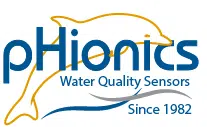STs Series Sensor Storage
Introduction
STs Series sensors are constructed from high-quality, durable materials that can be stored for long periods of time. The only weak point is the electrode, which can be damaged or expire during storage in the wrong conditions. These conditions vary depending on the type of electrode, which is why we have different storage instructions for each sensor. Please navigate to your sensor of interest using the Table of Contents.
STs Series Terminology

STs Series Conductivity Sensor Storage
pHionics conductivity sensors have electrodes that are sturdy and require no special treatment. Simply clean any process fluid and/or debris from the electrode with a brush and soapy water, then rinse and dry. Place the electrode guard on and slip the rubber boot that came with the sensor over the guard for further protection. Store in a cool, dry area.
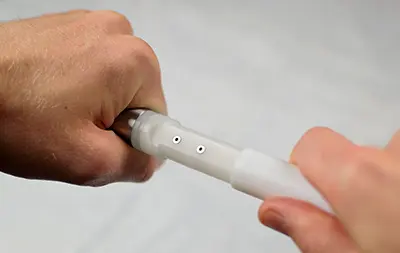
STs Series pH and ORP Sensor Storage
Materials
- STs Series Sensor
- Storage Boot
- Round vinyl pipe cap that is ¾ in. diameter by 3 in. height (One is provided with the purchase of each sensor)
- 3.0M KCl Solution
- KCl is relatively harmless but may cause irritation if it enters the eyes or an open wound. Please follow the proper safety procedures and obey all local guidelines for disposal.
- Cotton Ball or Soft Tissue Paper
- Towel
- Electrical Tape (Or any tape that creates a strong waterproof seal while being easy to remove)
Instructions
- Dry off the sensor using a towel.
- Remove the electrode guard.
- Clean the electrode to prevent oxidation and bacterial growth. For best practices, please see the following guides: pH Electrode Care | ORP Electrode Care
- Dip the cotton ball or soft tissue paper in the KCl solution.
5. Place the wet cotton ball or tissue paper through the slots in the guard and snap the electrode guard in place over the bulb.
-
- There should be enough tissue paper that the plastic guard presses it against the bulb but not so much that it is difficult to snap the guard in place. If unsure of the right amount of tissue paper, it is best to be on the cautious side and use less to avoid putting excessive pressure on the bulb.
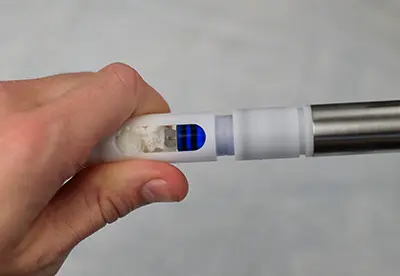
6. Fill the storage boot halfway with KCl solution.
7. Slide the boot fully over the STs Series electrode guard.
- Some KCl is expected to overflow so we recommend performing this procedure over a sink or container to catch the liquid.
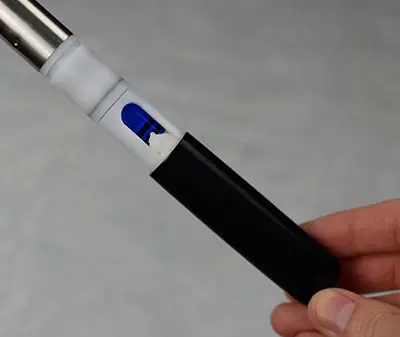
8. Use electrical tape to secure the boot to the sensor and create a waterproof seal.
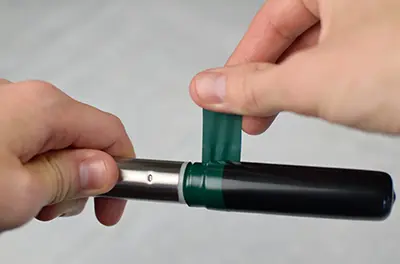
9. Store in an area with low humidity and temperatures less than 35°C.
STs Series Dissolved Oxygen Sensor Storage
Materials
- STs Series Sensor
- Storage Boot
- A round vinyl pipe cap that is ¾ in. diameter by 3 in. height (One is provided with the purchase of each sensor)
- Soft Tissue Paper
- Towel
- Electrical Tape (Or any tape that creates a strong waterproof seal while being easy to remove)
Instructions
- Dry off the sensor using a towel.
- Remove the electrode guard.
- Clean the electrode to prevent oxidation and bacterial growth. Please read this article for recommended cleaning procedures.
- Dry the electrode by patting with a soft piece of tissue paper. Do not wipe or rub the tip or else damage may occur.
- Twist the electrode body one full turn to disengage the electrode.
- Slip the clean and dry storage boot fully over the electrode guard.
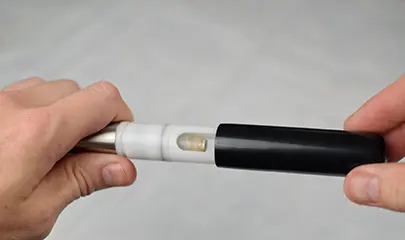
7. Use electrical tape to secure the boot to the sensor and create a waterproof seal. This prevents moisture from entering into the boot, which would reduce the lifespan of the electrode.

8. Store in an area with low humidity and temperatures less than 35°C.
Suggest an Article Topic!
Recent Articles
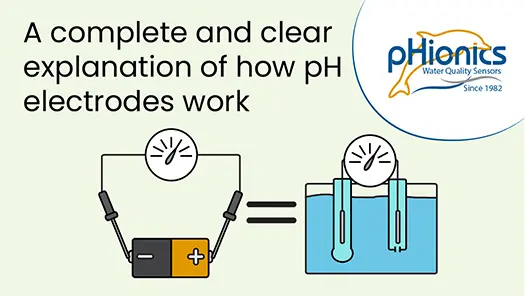
How Glass pH Electrodes Work
In this video, learn about the electrochemistry that allows silver/silver chloride pH electrodes to measure the acidity of solutions. Modern electrode design is also reviewed to demonstrate what improvements have been made and what weaknesses are still present. Click...

How a Glass pH Electrode Works
A comprehensive article covering how glass electrodes measure pH in a simple, understandable format. Specifically for silver/silver chloride electrodes.

Choose the Right Sensor for Water Quality Monitoring
Sensors are the backbone of any water quality monitoring system since they determine accuracy and reliability. Learn more about important characteristics to consider when choosing a sensor for your application.
